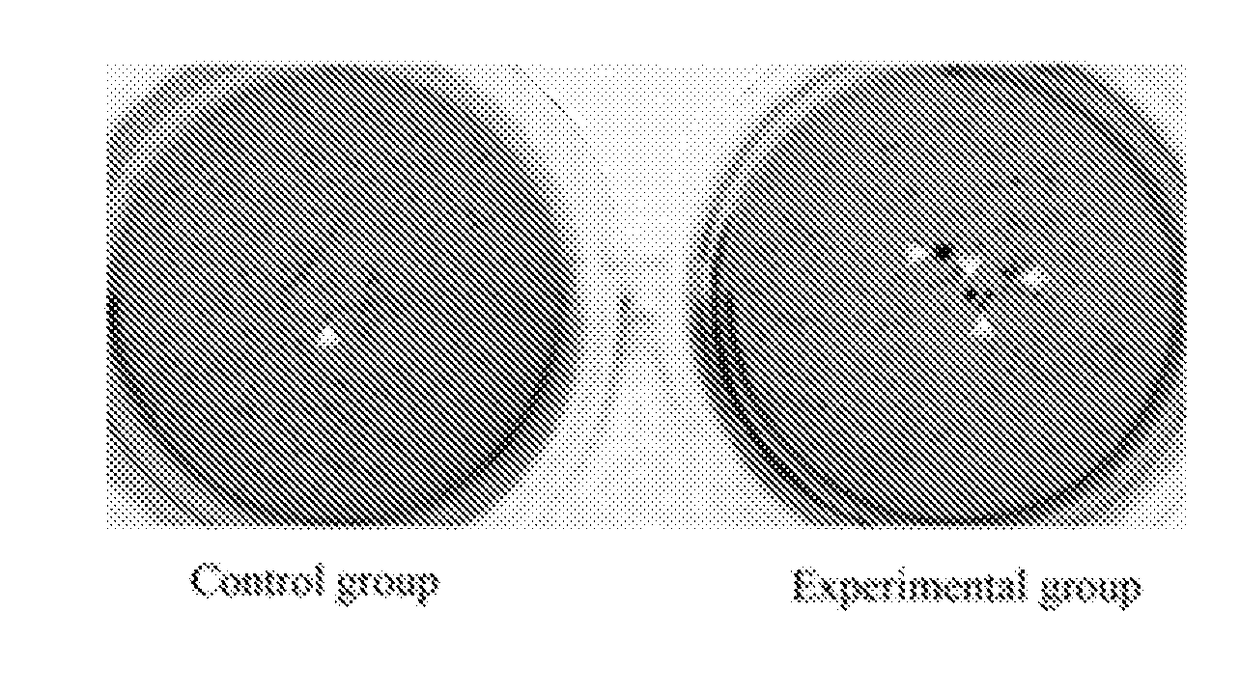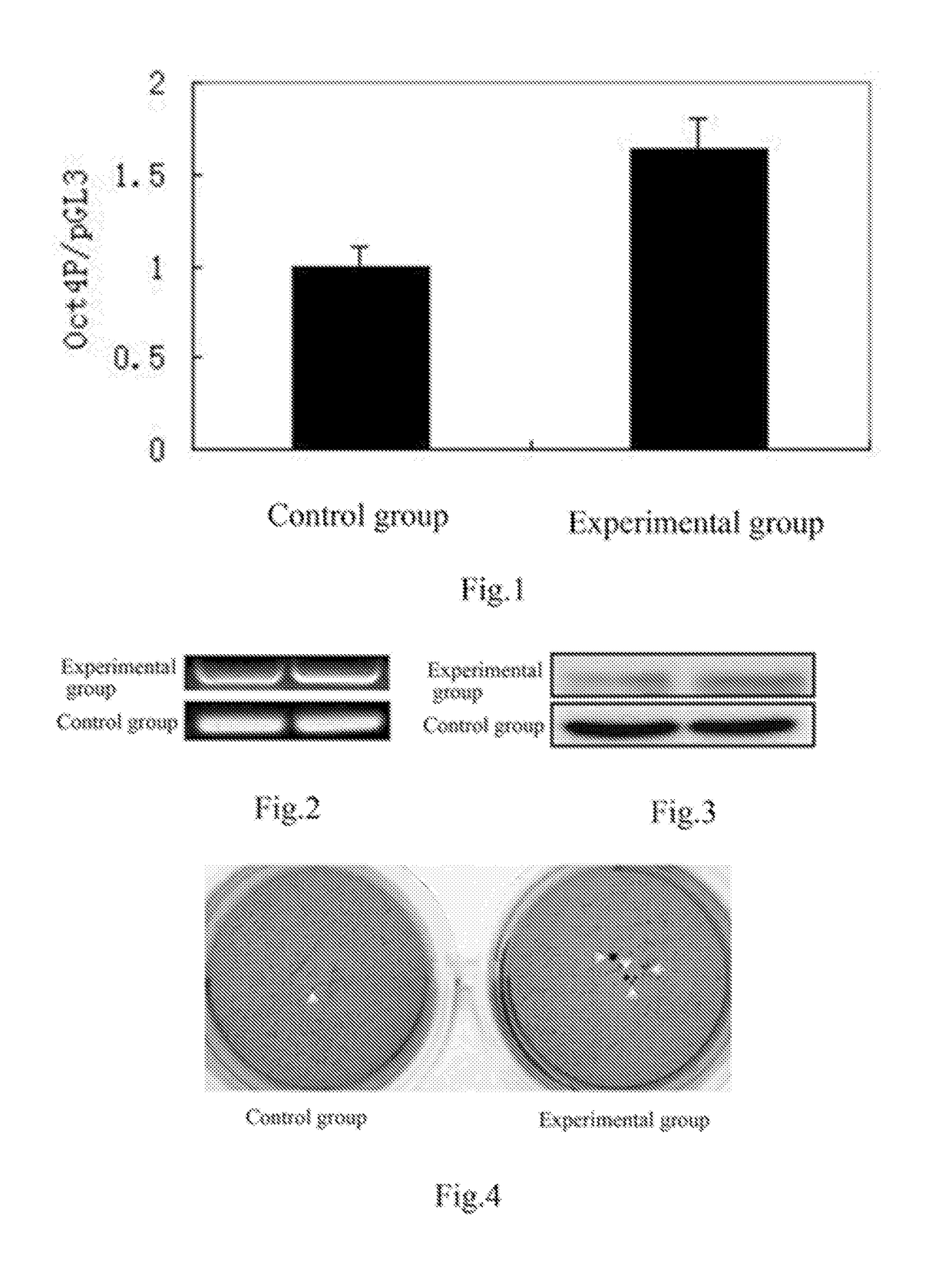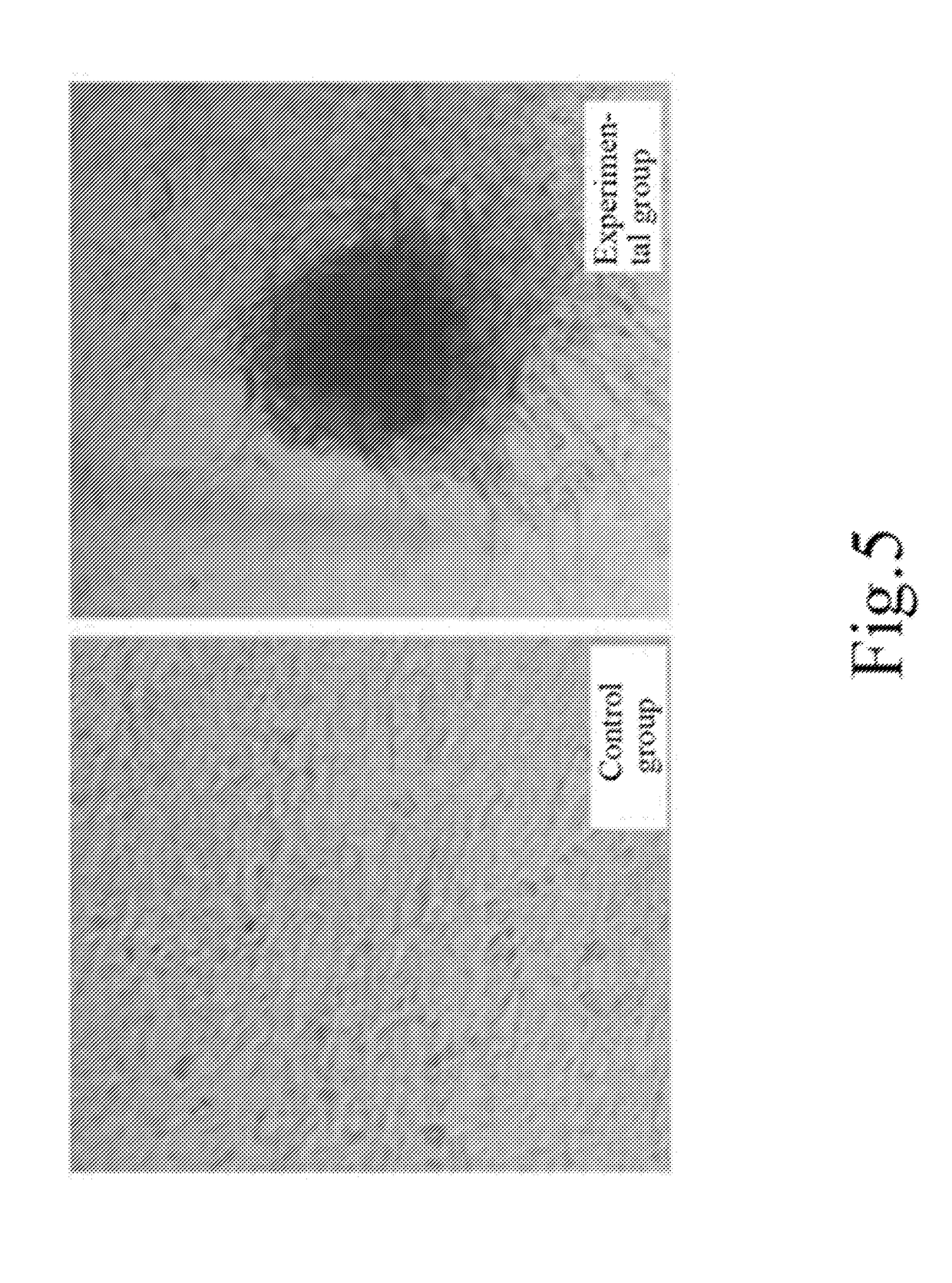Application of ethyl p-methoxycinnamate and derivatives thereof in maintaining self-renewal and pluripotency of stem cells
a technology of ethyl p-methoxycinnamate and stem cells, applied in the field of biological medicine, can solve the problems of difficult culture of stem cells in vitro for a long period of time in a large number, complex multiple regulating functions, and difficult to have medicinal and clinical therapeutic value, so as to maintain the self-renewal and pluripotent state of stem cells, promote expression of oct4 genes, maintain the effect of self-renewal and pluripotency
- Summary
- Abstract
- Description
- Claims
- Application Information
AI Technical Summary
Benefits of technology
Problems solved by technology
Method used
Image
Examples
example 1
Effect of Ethyl p-Methoxycinnamate on Oct4 Promoter Activity
[0086]According to a method described in literature (Yang H M, Do H J, Oh J H, et al. Characterization of putative cis-regulatory elements that control the transcriptional activity of the human Oct4 promoter[J]. Journal of cellular biochemistry, 2005, 96(4):821-830.), the promoter of Oct4 gene was picked and cloned into pGL3-Basic, so as to construct pGL3-Oct4P-Basic reporter plasmid. One day before transfection, mouse teratoma cells P19 were inoculated into a 6-well cell culture plate at a density of 2×105 cells / well to make the cells grown to about 80% before transfection. A liposomal transfection reagent Entranster™-D from Engreen company was used to perform the transfection according to the instructions. The P19 cells were transfected with the target plasmid pGL3-Oct4P-Basic, and the total amount of the plasmid used for the transfection was 3 μg / well. The plasmid was added to 50 μL of serum-free DMEM culture medium and ...
example 2
Effect of Ethyl p-Methoxycinnamate on the Expression of Oct4 mRNA
[0089]1) mRNA Extraction and Reverse Transcription
[0090]P19 cells were inoculated in a 6-well cell culture plate at a density of 2×105 cells / well. After 24 h, DMEM culture medium containing 3% serum were used for replacement. Ethyl p-methoxycinnamate was added to the experimental group to render its final concentration at 5 μg / mL, and a control group was treated with DMSO. After 12 h, the 6-well plate overgrown with monolayer cells was taken out from a cell incubator, and the cells were washed 3 times with pre-cooled PBS. 1 mL of a pre-cooled Trizol solution was added. After vigorous pipetting, the mixture was transferred to an EP tube and allowed to stand at room temperature for 5 min. Then 200 μL of chloroform was added to the mixture, vigorously mixed well for 15 s, and the mixture containing chloroform was allowed to stand at room temperature for 2 min and centrifuged at 12000 rpm at 4° C. for 15 min. An upper aque...
example 3
Effect of Ethyl p-Methoxycinnamate on Oct4 Protein Expression
[0099]The effect of ethyl p-methoxycinnamate on Oct4 protein expression was assayed using a Western Blot method. Mouse teratoma cells P19 were inoculated in a 6-well plate. After 24 h, ethyl p-methoxycinnamate with a final concentration of 5 μg / mL was added to continue to act for another 24 h, and the control group was treated with DMSO. After the cells were washed with PBS three times, the cells were scraped with a scraper, transferred to an EP tube, and centrifuged at 4000 rpm for 5 min. The supernatant was discarded. 90 μL of lysis solution (50 mM Tris-HCl pH 7.5, 150 mM NaCl, 1 mM NaF, 0.5% NP-40, 2 μg / mL Aprotinin, and 1 mM PMSF) was added to each tube of precipitate, and the EP tube was treated on ice for 30 min and vortexed once every 5 min, so that the cells were completely lysed. After centrifugation at 12000 rpm for 10 min, the supernatant was transferred to a new EP tube, ⅓ volume of 4× protein loading buffer wa...
PUM
| Property | Measurement | Unit |
|---|---|---|
| Dimensionless property | aaaaa | aaaaa |
Abstract
Description
Claims
Application Information
 Login to View More
Login to View More - R&D
- Intellectual Property
- Life Sciences
- Materials
- Tech Scout
- Unparalleled Data Quality
- Higher Quality Content
- 60% Fewer Hallucinations
Browse by: Latest US Patents, China's latest patents, Technical Efficacy Thesaurus, Application Domain, Technology Topic, Popular Technical Reports.
© 2025 PatSnap. All rights reserved.Legal|Privacy policy|Modern Slavery Act Transparency Statement|Sitemap|About US| Contact US: help@patsnap.com



